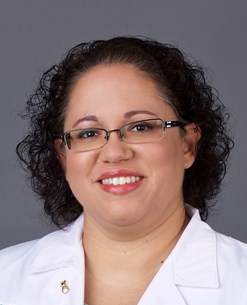Meeting
2022 ASCO Annual Meeting

Miami Cancer Institute, Baptist Health South Florida, Miami, FL
Yazmin Odia , Carl Johannes Koschmann , Rohinton Tarapore , Jeffrey Allen , Wafik Tharwat Zaky , Matthew David Hall , Doured Daghistani , Ziad Khatib , Dolly Aguilera , Tobey J. MacDonald , Peter de Blank , Susan L. McGovern , Sabine Mueller , Cassie Kline , Nicholas A. Vitanza , Joshua E. Allen , Sharon L. Gardner
Background: H3 K27M-mutant diffuse midline glioma is a universally fatal malignancy primarily affecting children and young adults; while radiotherapy (RT) provides transient benefit, no effective systemic therapy is currently available. ONC201, a first-in-class imipridone, is an oral, blood-brain barrier penetrating, selective small molecule antagonist of dopamine receptor D2/3 and agonist of the mitochondrial protease ClpP. Previously, ONC201 monotherapy demonstrated durable objective responses in adults with recurrent H3 K27M-mutant glioma. This phase 1 trial was designed to evaluate ONC201±RT in pediatric patients with H3 K27M-mutant midline glioma DIPG. Methods: This multicenter, open-label, dose escalation and expansion phase 1 study of ONC201 is comprised of eight arms that will evaluate the recommended phase 2 dose (RP2D) of ONC201, biomarkers, and pharmacokinetics (PK) of ONC201±RT in various treatment settings. Arm G previously defined the RP2D for ONC201 administered twice weekly on consecutive days in patients with H3 K27M-mutant glioma who had completed radiotherapy. Arm H, for which enrollment is ongoing, will estimate the influence of tumor location and blood-brain barrier integrity on PK and intratumoral ONC201 exposure in biopsy-eligible pediatric tumors (DIPG or contrast-enhancing thalamic glioma). Patients eligible for Arm H will be aged 2-≤19 years, ≥2 weeks from last RT administration, and have a Karnofsky/Lansky performance score ≥50; prior confirmation of H3 K27M mutation is not required. In Arm H, single-agent ONC201 administration will occur on two consecutive days each week during each 21-day cycle at the RP2D defined in Arm G. Evidence of disease progression is not required; as such, ONC201 may be administered in the maintenance setting or for recurrent disease. Arm H has a planned enrollment of 27 patients. Each patient will undergo biopsy at a single prespecified biopsy window, which will be assigned at enrollment (Table); plasma for PK analysis will be collected from all patients at all time points shown in the Table, with additional collection pre-dose and 0.5 h post first dose. Clinical trial information: NCT03416530.
| Cohort | Cycle 1, Day 1:1-3 h post first dose | Cycle 1, Day 1: 22-26 h post first dosea | Cycle 1, Day 2:1-3 h post second dose | Cycle 1, Day 2:6-10 h post second dose | Cycle 1, Day 2:22-26 h post second dose |
|---|---|---|---|---|---|
| Thalamic | n = 3 | n = 3 | n = 3 | n = 3 | n = 3 |
| DIPG | n = 3 | 0b | n = 3 | n = 3 | n = 3 |
aPrior to second dose. bPreviously collected in another arm of the trial.
Disclaimer
This material on this page is ©2024 American Society of Clinical Oncology, all rights reserved. Licensing available upon request. For more information, please contact licensing@asco.org
2022 ASCO Annual Meeting
Poster Session
Central Nervous System Tumors
Central Nervous System Tumors
Primary CNS Tumors–Glioma
NCT03416530
J Clin Oncol 40, 2022 (suppl 16; abstr TPS2082)
10.1200/JCO.2022.40.16_suppl.TPS2082
TPS2082
415b
Abstract Disclosures
2023 ASCO Annual Meeting
First Author: Francois Doz
2023 ASCO Annual Meeting
First Author: Suying Lu
2023 ASCO Annual Meeting
First Author: Colette Shen
2023 ASCO Annual Meeting
First Author: Theodore Willis Laetsch